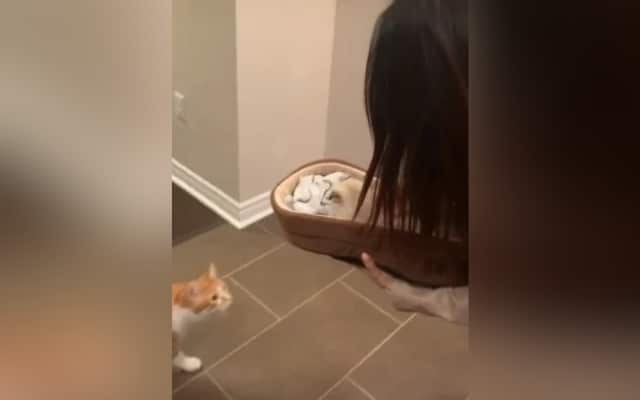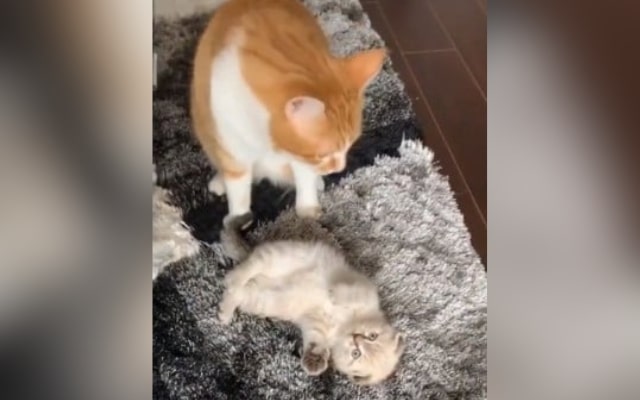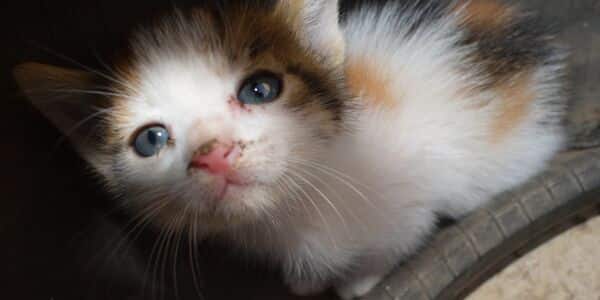We’ve all had those days when nothing seems to go right. Sometimes, these bad days come and go quickly, while other times they linger, stretching into multiple days or even weeks. Often, we feel better after a good night’s sleep, a hearty laugh, or some quality time with friends.
As humans, we’re fortunate enough to share our feelings with those around us. But what about our pets, like cats? They can’t tell us when they’re feeling low.

A TikTok video shared by @brittnaaay (and later on Reddit by kavish004) captures an orange cat lazily strolling around a house, showing little interest in his surroundings.
His owner noticed he wasn’t as energetic as before, suspecting boredom and a lack of stimulation. She decided to get him a kitten companion, hoping it would improve his mood.

The plan worked perfectly. The video shows clips of the two cats playing and napping together. The once-indifferent orange cat now looks much happier. This change isn’t surprising—just as humans feel better around friends, cats can also benefit from companionship.

Recognizing Depression in Cats
Just like us, cats can experience down days, but they can’t voice their feelings. However, there are signs we can watch for to understand their emotional state.
- Excessive Sleeping: While cats are known for sleeping a lot, they also need to play and stay mentally active. If your cat is sleeping more than usual, it might be a sign something is wrong.
- Loss of Appetite: Feeding time is typically exciting for pets. If your cat loses interest in food, it’s important to investigate further.
- Over and Under-Grooming: Similar to how a messy room can indicate human distress, changes in grooming can signal a cat’s emotional struggle. Over-grooming might result in irritated skin and bald patches, while under-grooming can lead to matted fur and dandruff.
- Increased Aggression: Some cats are naturally aggressive, making it hard to spot changes. However, if a generally calm cat starts showing hostility, it could be due to depression.
- Seclusion: Cats often enjoy their space, but many also like cuddling with their owners. If your cat starts hiding more than usual, it might be a sign of discomfort.

Helping a Depressed Cat
- Consult a Professional: Changes in behavior might be due to physical issues. A vet can help rule out illness or injury.
- Maintain Routine: Environmental or routine changes can stress cats. If you’ve recently changed your cat’s food or schedule, try returning to the previous routine to see if it helps.
- Provide Mental Stimulation: Boredom can be a significant factor in a cat’s mood. Spending more time with your cat and engaging them in play can boost their spirits—and yours too.
By being attentive to these signs and taking steps to address them, we can help our feline friends stay happy and healthy.

